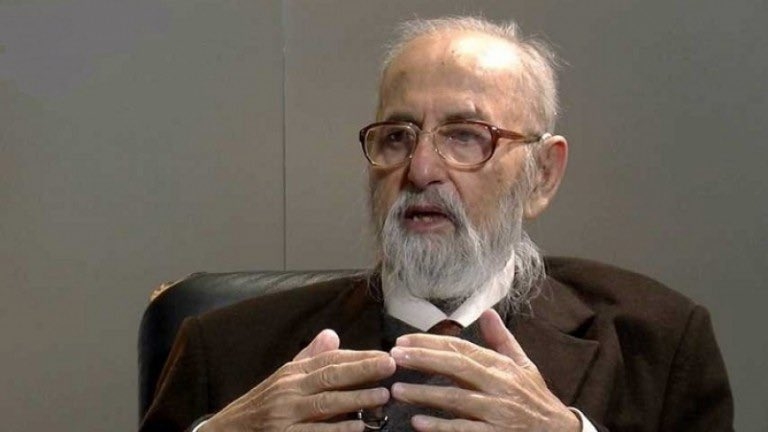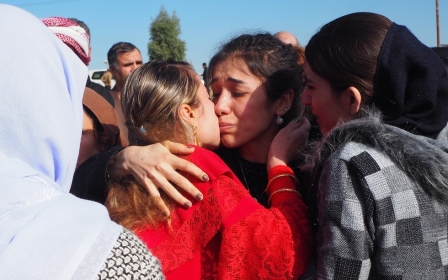Yazidi leader Emir Tahseen Said Ali dies aged 85

The emir of the Yazidis, a Middle Eastern religious community that was devastated by the Islamic State (IS) group in Iraq in 2015, has died in the German city of Hanover, aged 85.
Tahseen Said Ali was born in 1933 in Shekhan district, northwest Iraq. At age 11 he became the head of the world's Yazidis after the death of his father, Emir Said.
Emir Tahseen lived much of his life in Germany, home to more than 60,000 Yazidis - the most significant community outside the Middle East. He died there on Monday.
Most Yazidis are scattered between Iraq, Turkey, Armenia and Syria. The majority of the community's German population fled their homes in Turkey during the 1990s, fearing religious persecution.
Iraqi Yazidi MP Vian Dakhil told the AFP news agency that Emir Tahseen would be buried in Iraq's Kurdistan region.
Hazem, Emir Tahseen's son, was appointed to be the next head of the community, as is customary - the position is hereditary.
Of the world's 1.5 million Yazidis, around 550,000 once lived in the remote corners of northern Iraq, with the faith's most sacred temple located in the town of Lalish, where Emir Tahseen was born.
However, in summer 2015, an estimated 400,000 Yazidis fled their homes around Sinjar mountain, northwest of Baghdad, and more than 1,280 were killed as IS launched a bloody attack on the community, grabbing media attention.
IS fighters slaughtered Yazidi men and boys, then abducted women and girls to be abused as "sex slaves".
The United Nations has said IS's actions could amount to genocide, and is investigating the militant group's atrocities across Iraq.
In October, a Yazidi woman, Nadia Murad, was awarded the Nobel Peace Prize for her campaign to end sexual violence as a weapon of war.
Murad was one of thousands of Yazidi women captured by IS before they were driven out of Sinjar and other parts of Iraq by Kurdish forces and the Iraqi military and militias, backed by US-led coalition forces.
It is unclear when the Yazidi faith emerged. Some allege that it began in Iran more than 4,000 years ago, before integrating elements of Islam and Christianity. Others say that Yazidis appeared in Damascus in the 12th century, and that their master was Sheikh Adi ibn Musafir, a Sufi mystic and reformer.
With no holy book and organised into castes, Yazidis pray facing the sun and worship the seven angels of God. First and foremost among these is Melek Taus, or the Peacock Angel.
Middle East Eye propose une couverture et une analyse indépendantes et incomparables du Moyen-Orient, de l’Afrique du Nord et d’autres régions du monde. Pour en savoir plus sur la reprise de ce contenu et les frais qui s’appliquent, veuillez remplir ce formulaire [en anglais]. Pour en savoir plus sur MEE, cliquez ici [en anglais].




